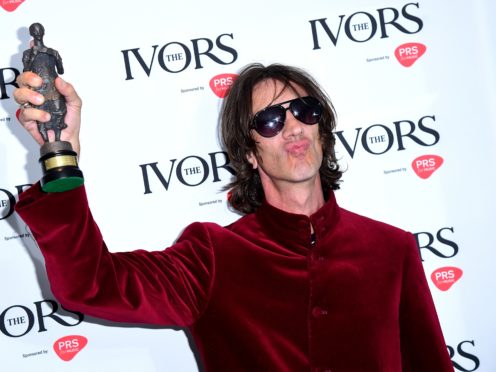Richard Ashcroft has said the “bitter taste” left by legal disputes over Bitter Sweet Symphony has gone after rights to the song were returned.
The singer said he can proudly tell his son “I wrote that” when he hears the track, after 22 years of suffering without credit or royalties for his work.
The Verve singer lost the rights to his lauded song, which ended up in the possession of Sir Mick Jagger and Keith Richards.
Released in 1997 on Urban Hymns, the track sampled The Rolling Stones’ song The Last Time, using a composition by Andrew Oldham, and became the centre of lawsuits which saw Ashcroft stripped of rights and royalties.
They have now been returned to Ashcroft and the songwriter, who admired The Rolling Stones when he was younger, said a weight has been lifted.
He said the dispute was never about the money, despite losing out on decades of royalties, but the need to be credited for his creation.
He told the Press Association: “It always left a slight bitter taste obviously. At least I can sit next to my son now and go, ‘Yeah, I wrote that’.
“Whenever I heard it, there was always something knocking around in my mind.
“Now that’s finally clear, and I can thank Mick and Keith for that.
“Many, many dollars have gone under the bridge. But it’s not really about the dollars, it never really was.
“It was about being credited for what you’d done. The amount of time I spent on that tune was incredible.”
Bitter Sweet Press Release. ✌🏻 pic.twitter.com/NnmiGf8e6C
— Richard Ashcroft (@richardashcroft) May 23, 2019
Ashcroft revealed that he recorded Bitter Sweet Symphony in Olympic Studios in London purely because it had been used by The Rolling Stones to record Sympathy For The Devil.
Band members Sir Mick and Richards ended up with writing credits and royalties for his song.
Credit also went to Oldham.
Ashcroft said he greatly admired The Rolling Stones and was delighted to see his song returned to him by a musical inspiration.
He said: “It’s incredible. Because The Stones, Mick and Keith, didn’t need to do that.
“To see it come all the way round, such legends musically, we all know probably one of the greatest rock and roll bands of all time. For them to do this is wonderful.
Congratulations to @richardashcroft who has won the Ivor Novello Award for @PRSforMusic Outstanding Contribution to British Music #TheIvors pic.twitter.com/ee36DFTGBY
— The Ivors Academy (@IvorsAcademy) May 23, 2019
“It also goes against the tide. At the moment, there’s a lot of lawyers chasing around songs and melodies.
“‘Does that sound like that? Right, well let’s sue him’.
“It’s quite nice to say, ‘Hang on, I had nothing to do with that. Those are his lyrics, that’s his melody’.”
Ashcroft announced the news of his returned rights at The Ivors in London, where he was honoured for his contribution to British music.
He addressed an applauding audience as he received his award, saying: “Thank you so much Keith Richards and Mick Jagger, for acknowledging me as the writer of a f****** masterpiece – it’ll live forever.”
